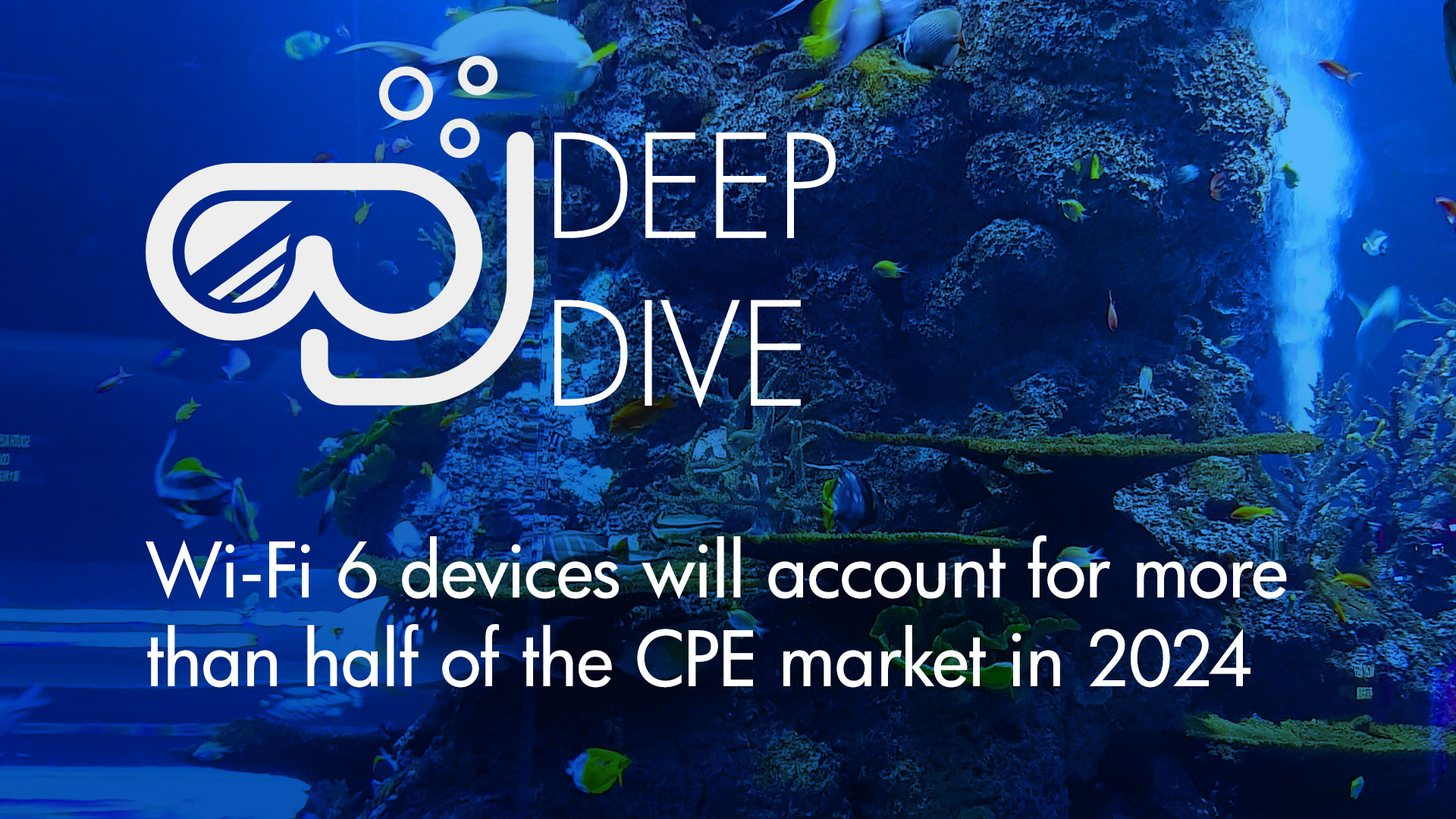

![]()
Introduction
Why 5G and Wi-Fi 6 are becoming best of friends (and why everyone’s a winner)
Wi-Fi and cellular have traditionally been cast as adversaries in networking and data communications. The two technology ecosystems have come at the same general ‘networking’ market from different technology frameworks (IT v. telecoms) and have usually been deployed with opposing – and sometimes disruptive to each other – business models. But with the arrival of 5G standards and technologies in the cellular world and Wi-Fi 6 on the Wi-Fi front, that is changing fast.
Long story short: by refining their next generation technology frameworks around enterprise customer requirements, both technology sets have adopted similar radio processing, service and spectrum management capabilities. As a result, the sound of technology advocates sniping at each other across a narrowing technical divide has become outdated. Instead, the new consensus and narrative – already understood by tech-savvy users – is that both technologies are well engineered and cutting edge and the old cat-calls of technical inferiority levelled at Wi-Fi can no longer be sustained.
Meanwhile the I.T./Wi-Fi industry’s counter-narrative – that telco technology is woefully unsuited to handling high speed data – has also been skewered with the arrival of LTE Advanced, the latest iteration of 4G. Now, with 5G cellular and Wi-Fi 6 emerging, we’re seeing two even better, faster, and equally fit-for-purpose, radio data access technologies being given the commercial and standards support they need to work profitably together.
Hewlett Packard Enterprise (HPE), like many of the telcos it works with, has a foot in both the Wi-Fi and next-gen cellular technology camps. It has a long history as a telco technology provider, most recently with network functions virtualisation (NFV) and related endeavours, especially at the telco ‘edge’ (a subject we will return to with the next TelecomTV ‘Perspectives’). HPE bolstered its Wi-Fi capability by buying Wi-Fi specialist Aruba in 2015 for $3 billion.
Consequently HPE can be seen as an enthusiast for what we might call the technology partnership approach to Wi-Fi 6 and 5G. But first some history and context on the two
technologies.
Why 5G is a major trajectory change for cellular and a major opportunity for Wi-Fi
Fifth generation cellular (5G) has been designed, developed and now marketed with two imperatives. First, to unleash new spectrum and with it better speed and performance, making smartphone and other mobile devices perform better and able to tackle new, advanced applications in addition to coping with rising average smartphone data consumption – projected to be 21GB per month, up from ‘just’ 5.6Gb in 2018.
Second, 5G was also designed to intercept new use cases in the corporate market (or the ‘verticals’ as the industry jargon has it) and was formulated to act as an umbrella network able to extend its management capabilities out to the ‘feeder’ networks supplying it with data.
In fact the 3GPP standards body made it part of its 5G mission to canvas input from user ‘verticals’ when formulating the standards, with the idea that network operators could even engineer ‘network slices’ tuned to perform to meet their specialised use cases.
Network slicing is where the network is subdivided into conceptual vertical slices, each slice’s performance defined by its own protocol stack and granted the network functions and security appropriate to the application or use case.
Such an arrangement enables a 5G network operator to not only provide a network service tailored for a specific industry or organisation, but for the first time enables it to underpin mobile performance with a service assurance backed up with service level agreement, something that has been standard practice with fixed networks and network services, but has so far been lacking in mobile.
For most network operators deploying 5G today, that full ‘5G’ capability may be some years off as it will require massive network upgrades to install the ‘cloud native’ infrastructure capable of coping with these advanced network applications.
The problem for 5G is that – like 3G and 4G – it is essentially an ‘outside’ technology, while both consumer and enterprise applications will increasingly demand ‘indoor’ consumption.
Help is available, however, as the 5G network’s technical openness and operators’ ambitions to have it perform as an umbrella network for all other network types, sets the scene for Wi-Fi 6 to play a major role in connecting the outside 5G to the world inside.
Wi-Fi 6: the old kid on the block
Wi-Fi technology is generally thought to have a long-term, almost tribal, rivalry with cellular technology. Each cellular generational change has been marked by news articles asking if Wi-Fi has any future now that ‘x’G has arrived. That happened with the introduction of 3G and was a huge talking point with the arrival of LTE, but in both those cases the newer, faster cell technology only seemed to increase the use of Wi-Fi, not wipe it out.
With the arrival of 5G the question of Wi-Fi survival still gets asked in article headlines but more often than not is quashed in article conclusions.
The reason?
The latest iteration of Wi-Fi, Wi-Fi 6, is as great a step forward technically as 5G is to LTE. So not only is Wi-Fi 6 no longer held to be in danger by the advance of cellular but is now widely accepted as a peer network technology, reaching the parts and undertaking the use cases that cell technology (in this case 5G) alone can’t adequately tackle.
What’s in a name?
One of the best things about Wi-Fi 6 is that the Wi-Fi Alliance (WFA) has decided to mark the inflection point that Wi-Fi 6 represents by giving it a memorable name and a fresh beginning. ‘Out’ goes the technical committee document number approach of the IEEE, which had earlier burdened it with ‘IEEE 802.11ax’ (its predecessor was IEEE 802.11ac).
Being known by a simple number has several plus points. It fits with what’s now become the standard popular technology naming convention and that seems to give it force. For instance Apple’s iOS is firmly numeric – 11, 12, 13, etc.
The ‘6’ also makes it seem one step ahead of 5G (don’t imagine that this wasn’t a factor). Plus it has ongoing marketing advantages as it suggests progression: if Wi-Fi 6 is good, it suggests, Wi-Fi 7 will be even better. IEEE 802.11ax, on the other hand belongs with the small print at the very end of the user manual.
But there’s also substance. The latest Wi-Fi 6 technology delivers more data in less time between exponentially more devices. Wi-Fi 6 devices will have enough processor speed and horsepower to process signals using OFDMA (Orthogonal frequency-division multiple access) which enables the systems to subdivide spectrum and allocate it to many users simultaneously, resulting in greater determinism and lower latency for real-time applications. Wi-Fi 5 (802.11ac) didn’t use OFDMA.
It also employs MIMO (multiple-input and multiple-output) to multiply the capacity of the radio link using multiple transmission and receiving antennas to exploit multipath propagation.
And it can use both multi-user MIMO and OFDMA simultaneously. So while ‘nominal’ data rates are significantly improved in Wi-Fi 6, the standard doubles down on spectrum-sharing and re-use between devices and the device horsepower enables all these separate streams, with disparate quality of service requirements, to be managed in useful ways that make Wi-Fi 6 a prime candidate for ‘peer-to-peer’ integration with 5G which sports similar capabilities.
![]()
To get the HPE ‘Perspective’ on Wi-Fi 6 and 5G, we talked with Stuart Strickland, Distinguished Technologist in the CTO team at Aruba, the Wi-Fi subsidiary of HPE.
Stuart is an ideal source. He’s no one-eyed Wi-Fi 6 advocate but actually specialises in the cross-over of the two technologies with a special focus on strategic planning for Wi-Fi in relation to cell networks. He spends a lot of time and air miles on standards work in this area and he makes a strong case that given their starting points it’s hardly surprising that cellular and Wi-Fi have both followed the science and the available technology in parallel to end up with necessarily overlapping solutions.
That means, he maintains, that the technologies and their enablers could work together nicely as equal partners within telcos, rather than spit sparks at each other from separate camps.
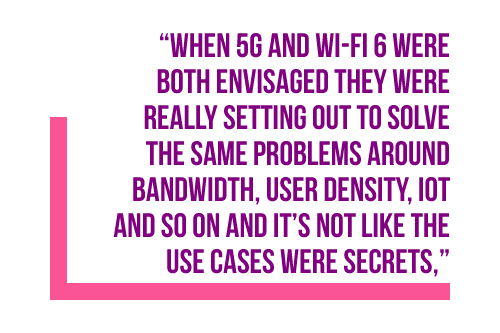
One of the requirements specified for both 5G and Wi-Fi 6 was around density. That had to be improved drastically for Wi-Fi solutions in enterprises where, as in the home, the number of devices requiring connection are on a steep rise as are the data rates they expect. While 802.11ac (Wi-Fi 5) could support up to about 256 clients in theory, says Stuart, “With Wi-Fi 6 we can support 1024 simultaneous clients. But it’s not just a question of throwing more resources at it, it’s about deterministically slicing up the resources much more finely.
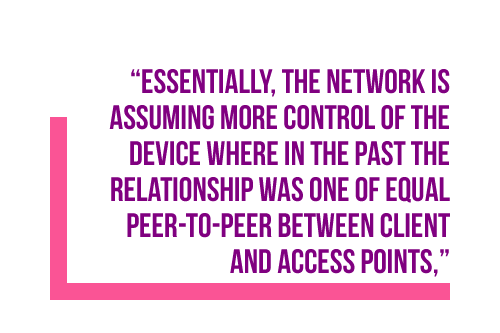
While 5G’s ‘New Radio’ is important, 5G is being introduced in so-called non-standalone mode in many countries where it complements existing LTE/4G capacity and adds new spectrum to the mix (as well as re-farming old spectrum), but that alone doesn’t change the game. The real 5G magic is in the network where the slicing will be supported and the complex multi-technology mix will be orchestrated.
DIFFERENCES IN APPROACH
don’t be tempted to crowd Wi-Fi 6 out
Differences in approach – don’t be tempted to crowd Wi-Fi 6 out
While it may often make sense for large telcos to develop openness around 5G and its relationship to Wi-Fi, it may make less sense to other, often smaller, telcos who would rather concentrate on a single technology set. These telcos might prefer to wade into intense radio network competition under a 5G-only banner and push 5G’s differentiation and its much publicised abilities for reliability, security and deterministic data delivery without complicating the pitch with support for Wi-Fi 6.
After all, a technology standard important enough to spark a widely-publicised ‘global race to 5G’ is not a bad marketing platform upon which to base a ‘pure’ 5G approach.
But according to Stuart, those companies which try to push 5G infrastructure into premises to displace Wi-Fi may regret doing so in the longer run when it becomes apparent that they and their customers probably spent extra money and took extra technology risks without winning any advantage in doing so.
The technology required by 5G to extend coverage indoors is substantially more expensive than Wi-Fi from both per-square-foot and lifecycle perspectives, so to use 5G for primary in-building access, a customer would need to upgrade their network as well as virtually all of their devices.
In summary, since the economics of Wi-Fi 6 are more favorable and performance is on par with 5G, Aruba envisions service providers using Wi-Fi as the radio front end for their 5G systems where it makes sense, as an alternative to Distributed Antenna Systems (DAS) and small cells.
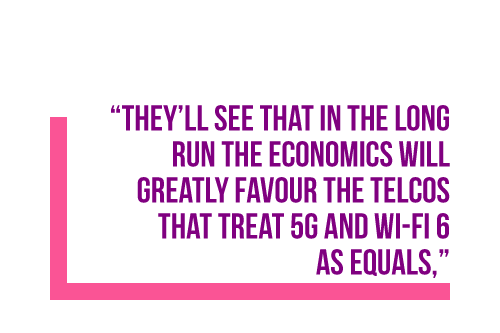
This combined Wi-Fi 6/5G approach is often made easier by the fact that Wi-Fi ‘camps’ exist already inside many telcos and its members have considerable technology and applications experience behind them.
Stuart says that Wi-Fi 6 will introduce manageability and seamless interworking between it and 5G cellular, and the telco edge can provide the control protocols and APIs to interwork with both systems to ensure that things like handover and traffic prioritisation can be handled transparently between them.
How important will those smoother ‘transitions’ be?
“A lot of our customers have Wi-Fi applications that need to run continuously across time and space, which means that when the customer moves off the site it may be a while before they encounter a Wi-Fi network that belongs to their corporation, so they’re traversing the cellular network infrastructure along the way. But in the past that experience has not been very good, even though cell credentials can be used to get onto Wi-Fi networks and nearly all devices that have cell connectivity now also have Wi-Fi. It’s ‘kludgy’ and has to improve.
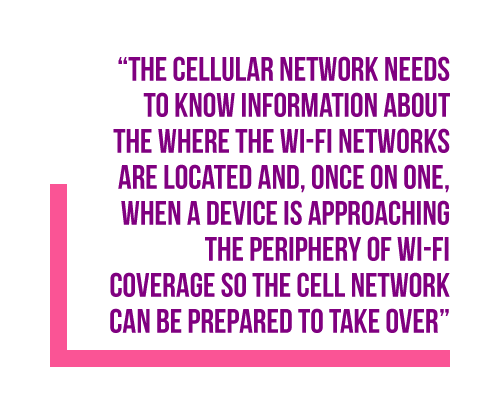
“And if the mobile network is weighing whether to hand over to a Wi-Fi network it will want to know about the quality of service available.
“Right now these are two separate worlds but there’s work being done within 3GPP on Access Traffic Steering, Switching and Splitting (ATSSS). This is a rich area of research and probably won’t be fully realized until Release 17 [2 years away]. But it promises to make a Wi-Fi network look to the core network like any other cellular node – we can expose all that information – and to make user mobility seamless.”
Co-existence & collaboration
In the meantime, Aruba is already taking steps to develop offerings which it hopes will make it the preferred partner for 5G networks, in cooperation with Telcos in order to advance this vision ahead of 3GPP specifications releases.
This cooperation includes support for Passpoint to simplify the process of Wi-Fi network discovery and authentication to guarantee that specific quality of service requirements are met. This functionality, called AirSlice, has been included as a feature in the latest ArubaOS release. It can replicate and support the guaranteed QoS capabilities promised (but not yet delivered) by 5G.
Another initiative will expose Wi-Fi network attributes to allow Telcos to make more intelligent handover and offloading decisions, effectively enabling seamless roaming between Wi-Fi 6 and 5G networks so that users don’t get annoying interruptions as they transit from one network to another. In the future core network, interworking will support ‘multi-access edge computing’ so that Wi-Fi 6 attached devices can use the same low latency services as 5G, as could various IoT applications and protocols, including of course LTE/4G.
Wi-Fi 6 and 5G will continue to evolve to better serve end users, and both markets will grow to address the macro trend of connecting devices and analyzing the data generated by these devices. For the vast majority of enterprise customers, Wi-Fi will continue to prove its value as a reliable, secure, and cost-effective wireless access technology for most enterprise applications, as it does today.
Stuart says that Wi-Fi 6 will introduce manageability and seamless interworking between it and 5G cellular, and the telco edge can provide the control protocols and APIs to interwork with both systems to ensure that things like handover and traffic prioritisation can be handled transparently between them.
How important will those smoother ‘transitions’ be?
“A lot of our customers have Wi-Fi applications that need to run continuously across time and space, which means that when the customer moves off the site it may be a while before they encounter a Wi-Fi network that belongs to their corporation, so they’re traversing the cellular network infrastructure along the way. But in the past that experience has not been very good, even though cell credentials can be used to get onto Wi-Fi networks and nearly all devices that have cell connectivity now also have Wi-Fi. It’s ‘kludgy’ and has to improve.



